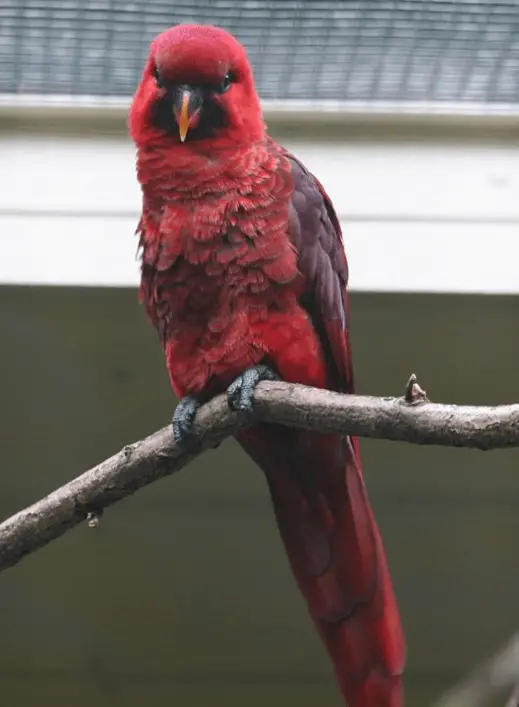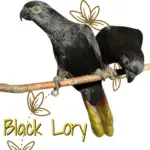
Cardinal Lory 30–31 cm; 173–215 g. Bright red, darker on back and wings; bill reddish-orange, dark at base; bare orbital skin dark; underparts lightly edged yellowish, giving vaguely scalloped appearance; legs grey.
Immature paler on back and wings, bill dull orange.
Monotypic.
Subspecies
Monotypic.
Distribution
Islands E of New Ireland S through Solomons to Makira (San Cristobal).
Habitat
Mangroves, lowland forest, secondary growth, coconut groves, wherever trees are flowering, lowlands to 1200 m (830 m on Bougainville). Makira is mostly a forest specialist (Davies et al. 2015).
Movement
Cardinal Lorys readily move between islands to feed and roost.

Cardinal Lory
Diet and Foraging
Blossoms of Cocos nucifera in gardens and of Elaeocarpus and Syzygium in primary forest, seemingly preferring food trees with red flowers; also small berries.
Sounds and Vocal Behavior
The commonest call of Cardinal Lory is a rather high-pitched and rising “tsleet!” or a more buzzy “tzeet!”.
When perched, the repertoire is more extensive including several shrill or grating notes. Groups in-flight utter continuous noisy shrieks.
Breeding
Copulation in Aug, and display in Sept. Only nest reported, Aug, was in hollow, meter-long, near-vertical branch stump near the base of 10 m high ridgetop tree, in primary forest at 1150 m, on Kolombangara.
Cardinal Lory
Conservation Status
Not globally threatened (Least Concern). CITES II. A BirdLife “restricted-range” species. Abundant on Kolombangara, Ghizo, New Georgia, Guadalcanal, Isabel, Bougainville; commonest in coconut plantations and other lowland disturbed sites, less so in lowland and hill forest.
Cardinal lory pet
SOURCE: Takuya Watanabe





















